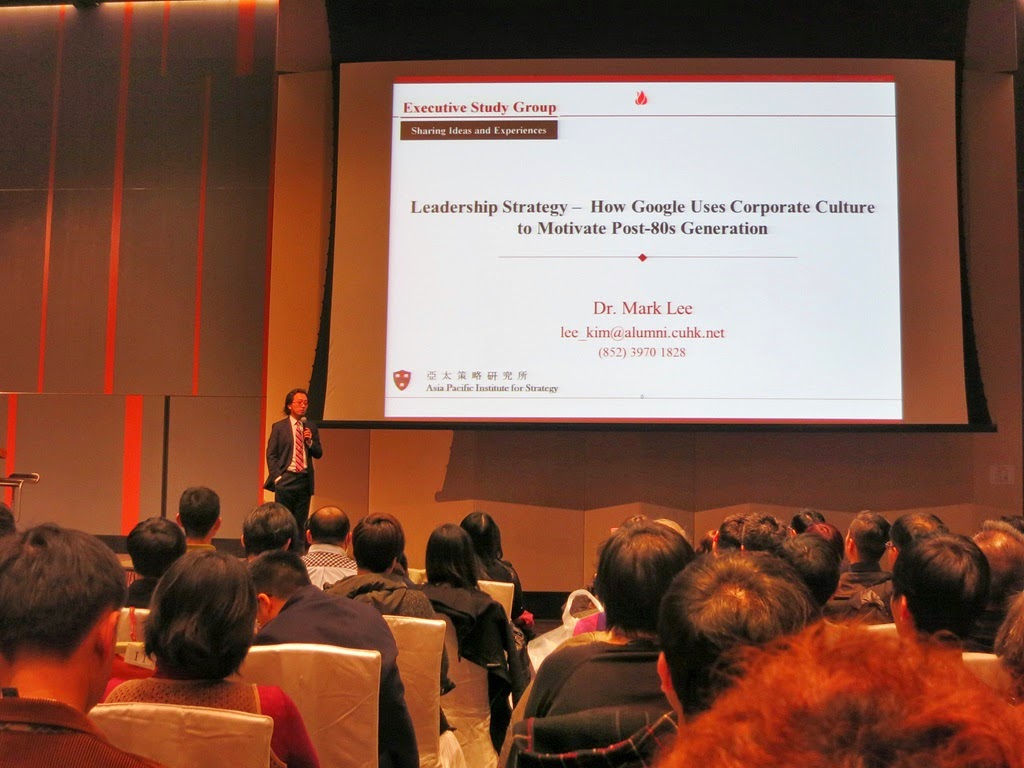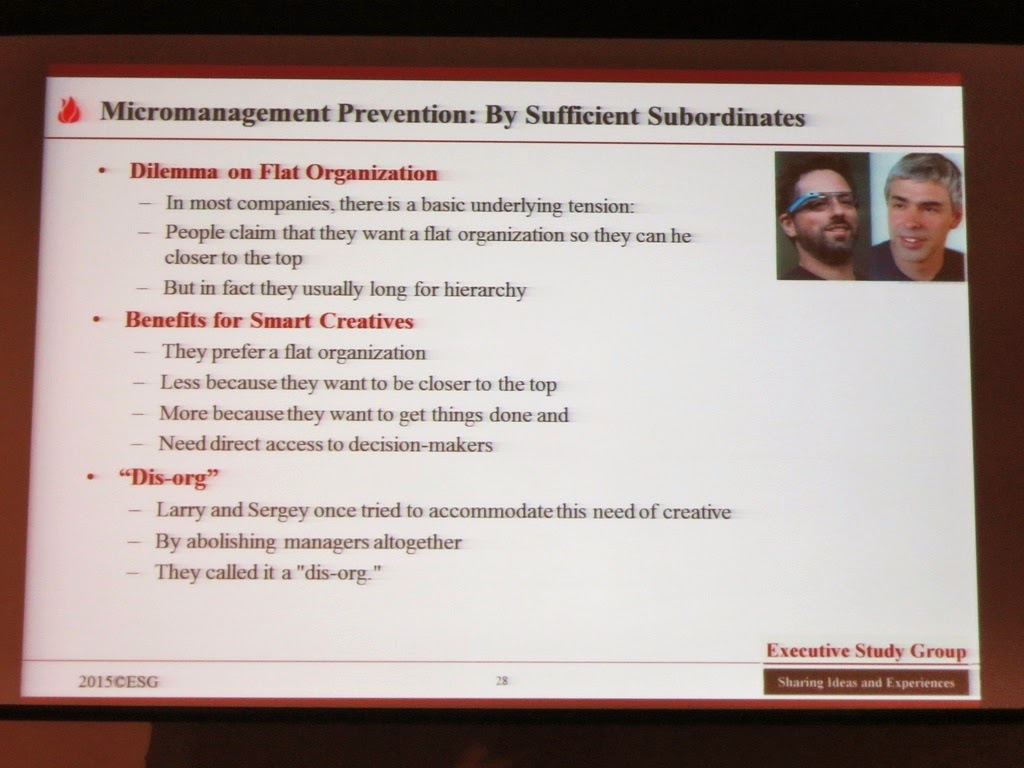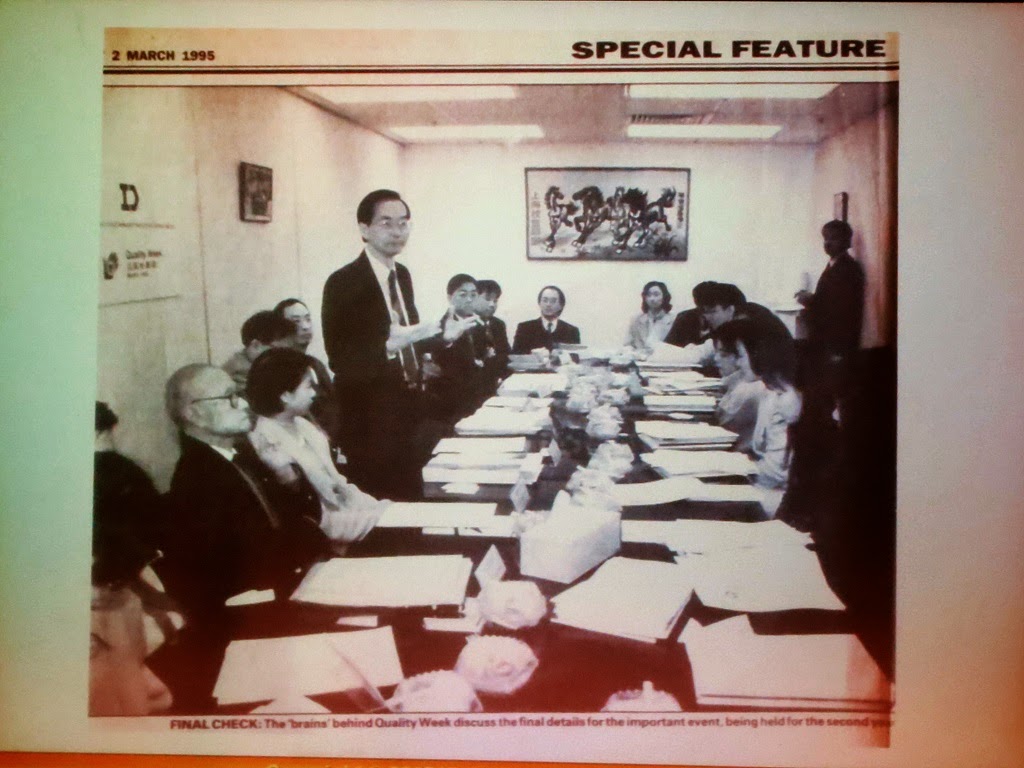Hong Kong Society for Quality (HKSQ) and Institute of Systematic Innovation Hong Kong (ISIHK) co-organized the 1st Workshop entitled “Innovative Total Quality Improvement (iTQI)” on 7th Feb 2015. The aim of this workshop was to introduce the first innovation approach being developed in Hong Kong, which combines the teachings of G. Altshuller’s “TRIZ” principles and innovation guru T. Brown’s “People Centered Innovation” theory named PKIR (問知創行) innovation model. Dr. Victor Lo (Vice Chairman - Institute of Systematic Innovation, HK) was our trainer who was familiar in both innovation and quality areas. Why he developed this method? Dr. Lo quoted Mr. Wen Jiabao (溫家寶) statement that “Autonomous Innovation, Method First.” (自主創新,方法先行。)
During Dr. Lo reviewed quality development in Hong Kong, Mr. Warner S.Y. YEH (Founding Chairman of HKSQ) was found in the newspaper in 1995 (Left 2nd). Then he mentioned his definition of TQM in 1994 “It is a series of
changes in culture that put forward as a management approach. It is to make everyone in the organization to
believe in &
be capable to continuously improve towards
customer satisfaction as planned through cross functional dynamics and
lead by top management.” Dr. Lo also introduced the evolution to creativity from Agriculture Age (farmer) in 18th Century to Industrial Age (factory worker) in the 19th Century, to Information Age (knowledge worker) in the 20th Century, to Conceptual Age (creators and empathizers) and end to Innovation in the 21st Century.
Dr. Victor Lo had defined Innovation in 2010 to be “Innovation is beyond own knowledge, throw off prejudices, to learn from outside world, then apply to add value.” (創新是超越自己的知識範疇,拋開成見,向外面的世界學習,然後應用増值。) In 2011, Dr. Lo used Need (需)to New (新) plus Function (用) that create Value (值) as the definition of Innovation. (需新用值) (which mentioned in the past seminar and details in
reference 20111122). After that he introduced the four major areas of innovation included “Customer Intimacy”, “Technical System”, “Product Leadership” and “Process Excellence”. Business Innovation was related between Value Proposition and Customer Segment.
I like Dr. Lo quoted form Albert Einstein that “We CANNOT solve our problems with the SAME THINKING. We used when we created them.” Then Dr. Lo introduced Innovation Methods which separated by TRIZ and People Centered Innovation (Design thinking – IDEO) (Pls read
reference 20131212). He taught us about 5 TRIZ pillars included Functionality, Resources, Ideality, Contradiction and Evolution. One food helped us to remember these 5 pillars was “Fried RICE” (F.RICE). (Details in
reference 20111122))
Then Dr. Lo briefed the 40 Innovation Principle (IP) Icons and demonstrated some examples.
We need study 40 IPs and then separated into three teams for competition.
After that Dr. Lo introduced the other side of innovation related to People Centered Innovation (PCI). Human characteristic about leaf and right brain dominant were discussed. Some samples about human idea association power were demonstrated. One card named “Random Word” (風馬牛) was showed below. Human “Pattern making capability” like IP 16 card was briefed and Dr. Lo quoted Edward de Bono that “Given a series of pictorial images to connect, one brain is usually capable of making even more connections.”
Then Dr. Lo briefed Design Thinking included “Empathize”, “Define”, “Ideate”, “Prototype”, “Test” and “Learn”; and then he modified to be his model for PCI named “Look, Hear, Test and Analysis” (望聞試切). After combined two approaches and the final PCI to be “Prototype” (雛形設計), “Empathy” (身同感受), “Test” (測試實驗), “Team” (熱誠團隊) and “Yong Jia” (用家關注).
Dr. Victor Lo concluded TRIZ and PCL to create Lo’s Ten Innovation Tips as follows:
Fried Rice (炒飯): F – Functionality; R – Resources; I – Ideality; C – Contradiction and E – Evolution;
Petty Cash (零用錢): P – Prototype; E – Empathy; T – Test; T – Team and Y – Yong Jia.
After that Dr. Lo quoted Plato that “You can discover more about a person in an hour of play than in a year of conversation”. There were seven golds in Lego Serious Play showed in the diagram below.
Finally, Dr. Lo expressed his dream that iTQI could be applied everybody, everywhere, every day and everything. His idea on Innovation is equal to Ideation X Implementation X Integrity = i^3.
Dr. Lo introduced his PKIR (問知創行) innovation model where P – Problem identification, K – Knowledge acquisition, I – Ideation and R – Realization with 50 Flash cards, as well as, standing on the shoulders of
TRIZ and
People Centered Innovation (PCI) giants. (Details
refer to 20131212).
One new element was added in this innovation model which named
Innovation Kata (創新套路).
Then we practiced the Lego Serious Play. Minda and I results to describe how to overcome barrier to innovate in our company.
Others classmates worked hearty and we needed to present finally.
Minda and I, as well as Angela (HKSQ team) were presented our Lego results.
At the end, we took a group photo with joy.
Minda and I got the certificates and took a photo with Dr. Victor Lo.
Angela also got the certificates and took a photo with Dr. Lo.
HKSQ team took photo with Dr. Lo with Lego results. The workshop was completed successfully and it would be continued very soon.
Reference:
HKSQ -
www.hksq.org
Institute of Systematic Innovation, HK -
http://www.isi.org.hk/

























































